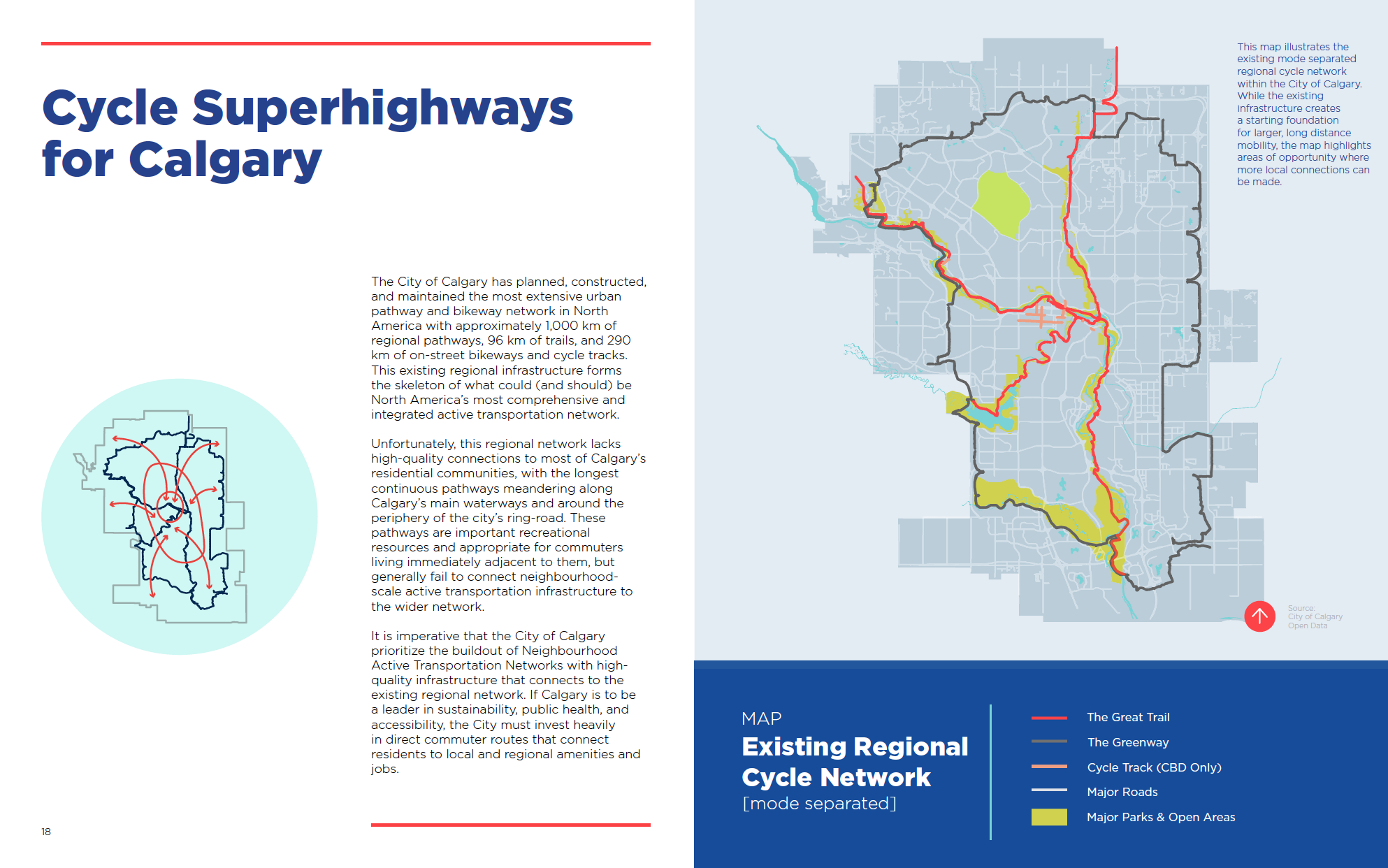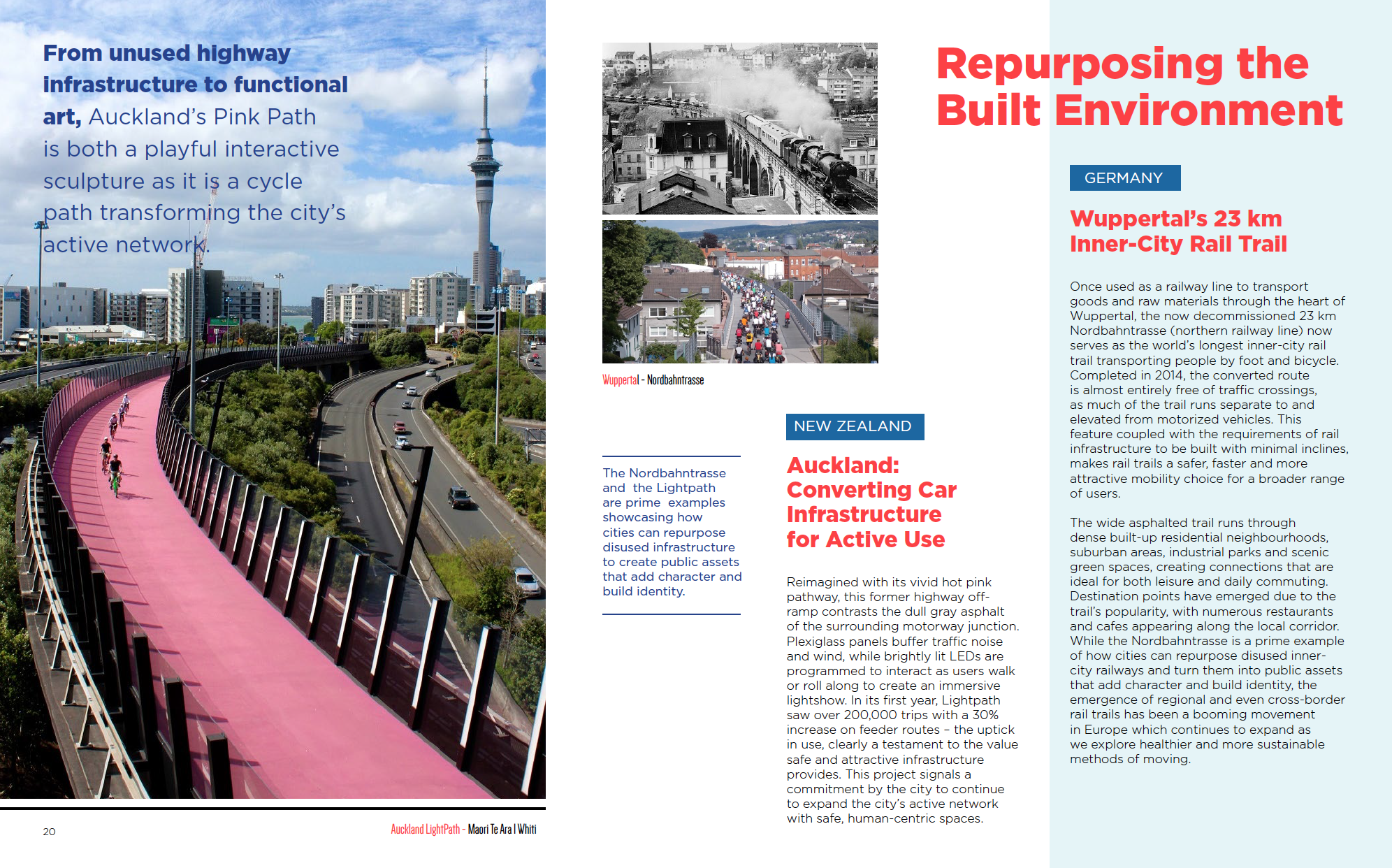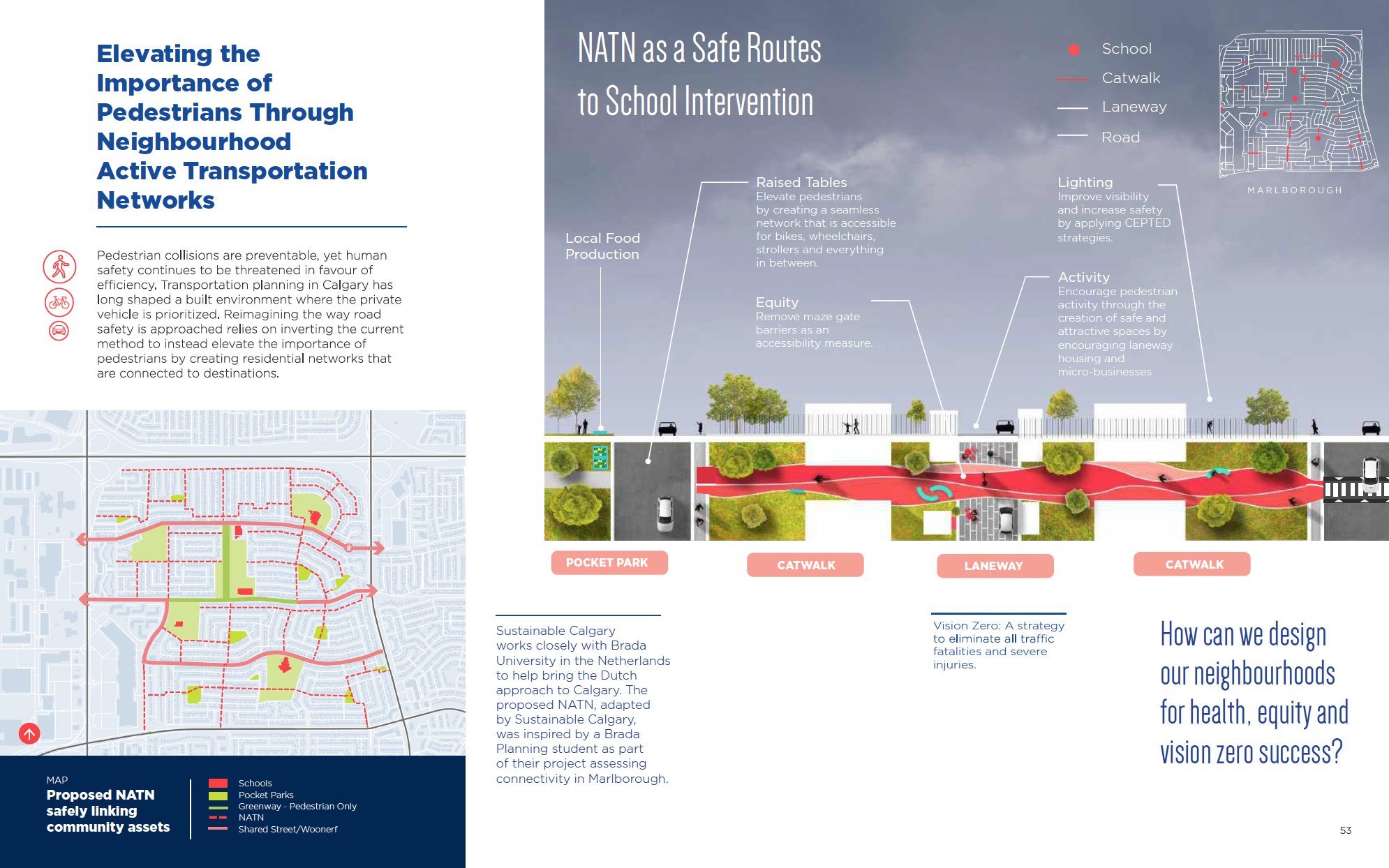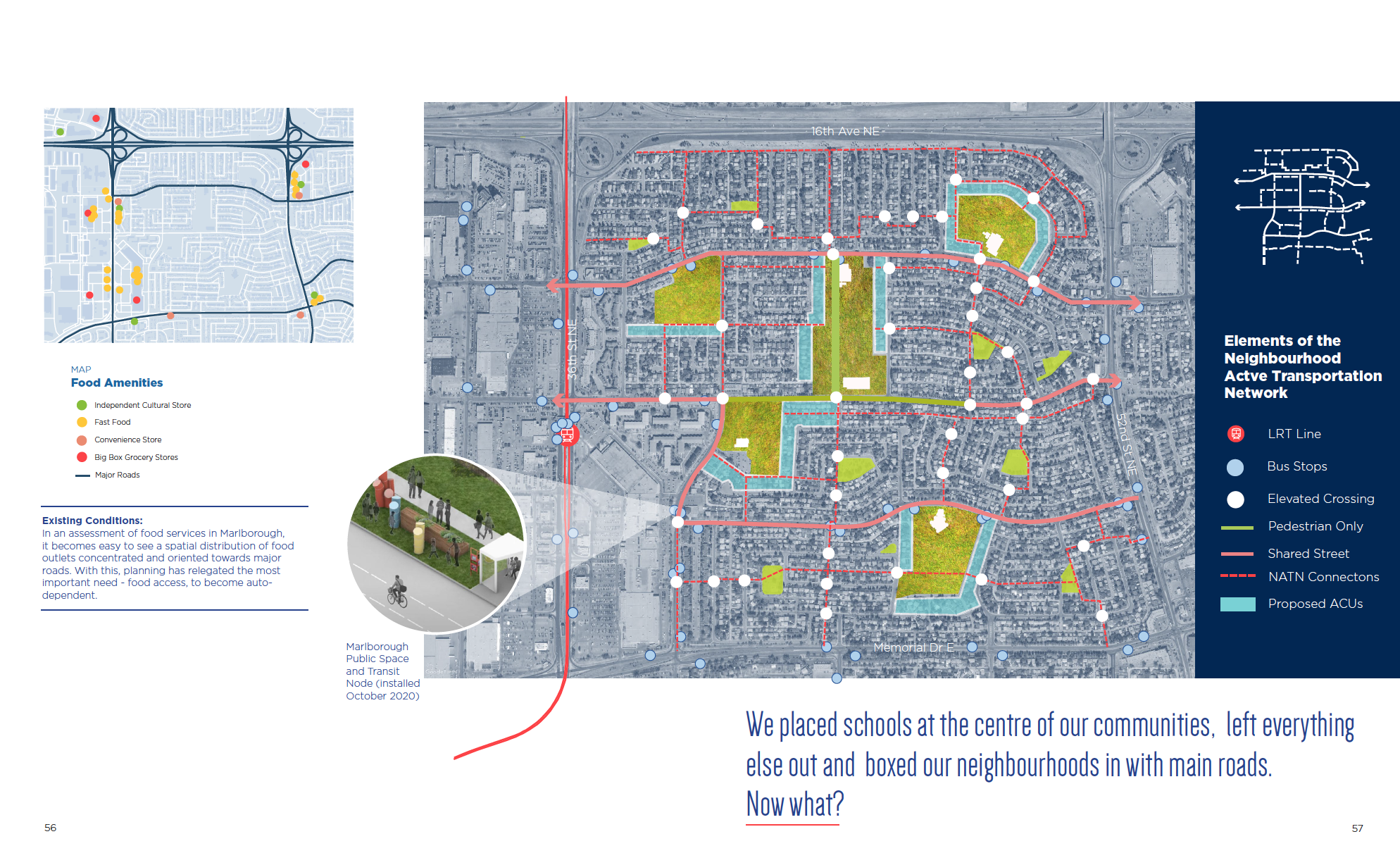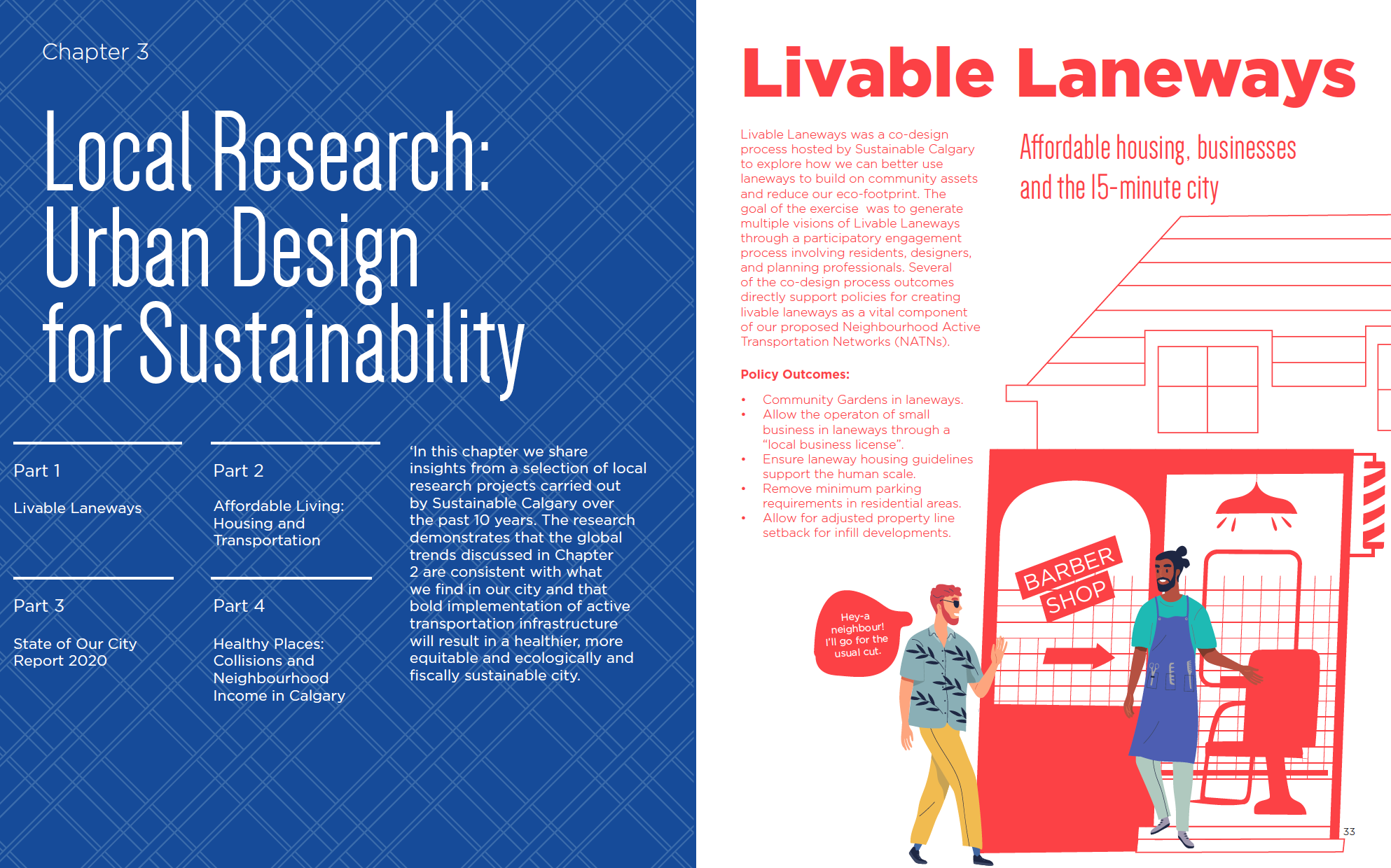Neighbourhood Active Transportation Networks Policy
Creators: Leticia Chapa and Noel Keough
We need a city where walking, biking, and public transit are the norm and cars are a tertiary mode. Why? To address the climate emergency, make life better for citizens struggling to make ends meet, provide opportunity to pursue active healthy lifestyles, and reduce the cost to grow and maintain our city.
Creating Neighbourhood Active Transportation Networks is part of the solution: infrastructure that prioritizes people on foot or bike, and conveniently, safely and enjoyably connects them with local destinations. This would be adopted as the primary mobility network at the community level.
Chapter 1 outlines global trends and case studies that highlight the significant progress that cities from around the world have made by investing in active transportation infrastructure.
Chapter 2 provides evidence for the health and wellness benefits from regular physical activity, and that active transportation policy is closely tied to public health policy.
Chapter 3 focuses on local research and studies that highlight the important links between land use, zoning, active transportation, economic activity and public health.
Chapter 4 presents case studies of four Calgary neighbourhoods (Marlborough, Manchester, Bridgeland and Acadia) where we have partnered with the community to implement enhancements to the active transportation network.
Chapter 5 focuses on the community of Marlborough and demonstrates what a Neighbourhood Active Transportation Network would look like once integrated with supportive land use changes.
Chapter 6 highlights specific policy statements we believe the City of Calgary should adopt if we are to see meaningful change in transitioning Calgary away from the automobile and towards more sustainable active modes.


